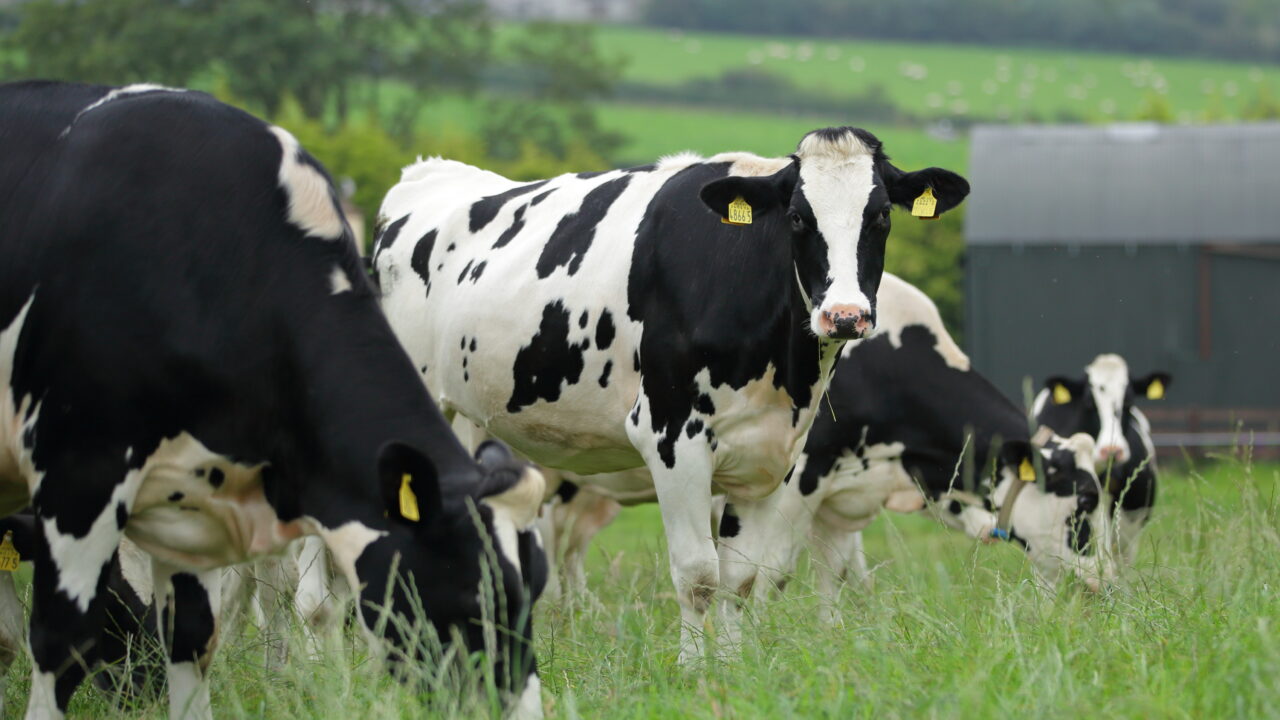A dairy technologist from the College of Agriculture Food and Rural Enterprise (CAFRE) has encouraged farmers to prioritise successful autumn grazing management.
Robert Patterson said successful autumn grazing management will increase the number of days at grass and ensure there is grass available for grazing the following spring.
The recent settled weather conditions have been a welcome change in the latter half of a very unsettled and variable grazing season, he said.
Grass growth on farms in Northern Ireland throughout August was higher than the long-term average and this should have made it possible on many farms to increase the grazing rotation length and average farm cover approaching September.
“A surplus of grass will have been built up in August on some farms and hopefully these will have been removed in late August,” Patterson said.
“Taking out surplus grass after the first week of September should be avoided if possible, as grass growth rates can fall quickly and paddocks removed will not have enough time to regrow and provide grass for the final grazing rotation.”
Autumn grazing
Patterson said creating an autumn rotation plan is a valuable tool to manage autumn grazing and ensure there will be grass available for grazing in the following spring.
The rotation plan will determine the area to be grazed each day, based on the initial average farm cover, the desired housing date and the target closing farm cover.
It is important, he said, to continue to measure and budget grass weekly, to allow progress to be tracked and manage supplementation if required.
“Successfully managing autumn grazing will increase the number of days at grass, reduce the cost of feeding the animals, conserve valuable winter forage supplies, and prepare the grazing platform for turnout in the following spring,” Patterson said.
“Careful management will be required to minimise sward damage and achieve good levels of grass utilisation.
“The full range of grazing tools and techniques should be used where applicable, including the use of multiple entry and exit points, using spur roads to access the back of paddocks, using 24- and 12-hour allocations, back fencing animals from grazed areas and on-off grazing if required.”
While weather and ground conditions are favourable, farmers should aim to graze paddocks with heavier soils and heavier grass covers to reduce sward damage and increase the utilisation of these swards.
“Aim to increase the grazing rotation length from 30 days at the start of September to 35 days by mid-September and 40 days by the start of October,” Patterson said.
“The average farm cover should reach its peak in mid-late September (2,600–2,750kg DM/ha), before reducing to a target closing farm cover of 2,050–2,100kg DM/ha.
“Prioritise fresh calved cows for housing first, with late lactation and lower yielding cows being the last to be housed. Grass will currently provide energy for maintenance plus 11L.”
As grass supply reduces and supplementation is required, Patterson has advised to introduce silage gradually with on-off grazing and transition the diet slowly.
He advised that paddocks most suitable for spring turnout be identified now and these should be grazed in the middle of the final grazing rotation.
“This should mean that these paddocks will have grass covers suitable for turnout (2,400–2,600kg DM/ha) and make good levels of grass utilisation more achievable,” he said.

